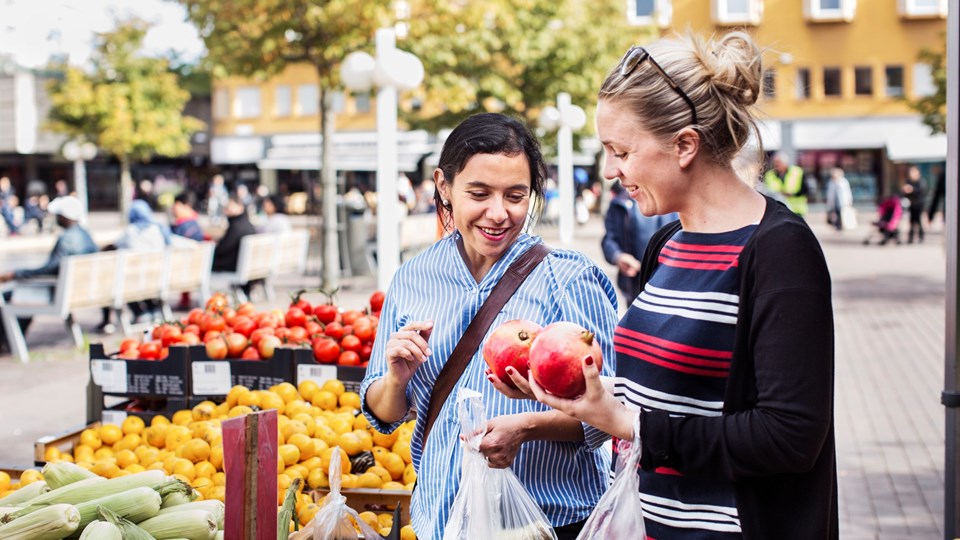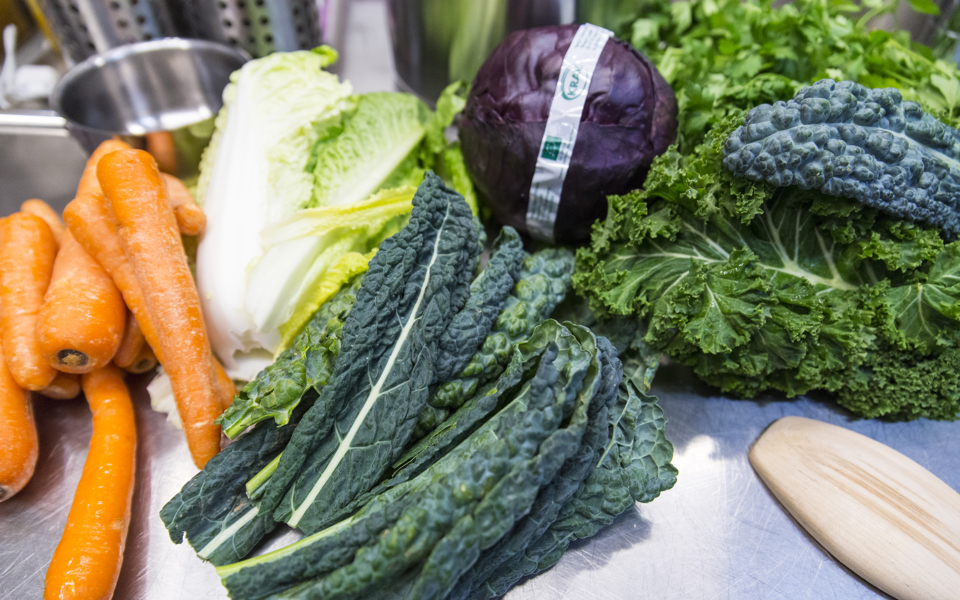Picking Foods
Choose foods that is free of harmful substances and do not create large emissions of greenhouse gases when they are produced or transported.
Different foods produce different environmental and climate impacts. By making conscious choices in everyday life, you help keep greenhouse gas emissions down and reduce the environmental impact.
Choose food produced without harmful substances and opt out of goods that create large emissions of greenhouse gases when they are produced or transported. Here are some concrete tips.
Eat more vegetarian food
- Consume less meat: The most climate-smart food is vegetarian.
- Choose locally grown: Buy fruit and vegetables that are locally produced.
- Start small: Make it a habit with one or more vegetarian days a week. Then expand.
- Eat protein-rich beans: Beans, lentils and peas, as well as grains and rough vegetables such as cabbage and root vegetables, are high in protein. They also have low climate impact and can be stored for a long time.
- Blend the meat: Mix in more vegetables in the food, for example minced meat mixed with beans, lentils or root vegetables.
- Try meat substitutes: Continue to cook your favourite recipes, but try replacing the meat with vegetarian options – for example, tofu, tempeh or different veggie mince.
- Keep it simple: Find simple dishes you like and make them often.
- Follow the seasons: Choose seasonal ingredients.
- Choose shelf-stable vegetables and root vegetables such as carrots, cauliflower and broccoli. They have a minimal impact on the climate.
- Build your own plate: With the World Wildlife Fund diet calculator, you can easily compare different foods and see how much greenhouse gas emissions each food causes.
Diet calculator, World Wildlife Fund website
If you eat meat or fish
- If you choose meat, eat less – the Nordic dietary guidelines suggest a maximum of 350 grams of meat per week.
- Choose chicken rather than beef. One kilogram of beef causes approximately nine times as many emissions as one kilogram of poultry.
- When you eat beef, choose naturally pastured beef. Grazing animals help keep land open, which is important for biodiversity.
- Reduce the amount of dairy products. Dairy products produce relatively high emissions of greenhouse gases, which are mainly due to the cows' digestion.
- Choose fish and seafoods that are sustainably caught and labeled with MSC (Marine Stewarship Council).
- With the World Wildlife Fund food guide, you get help choosing sustainable meat, fish and vegetables.
Food guide, World Wildlife Fund website
Organic foods
Buy organic food. In organic farming, no harmful pesticides are used and you contribute to a better environment where the food was produced. Some products are heavily sprayed during conventional cultivation and therefore it is especially important to choose organic when you buy:
- Coffee
- Apples
- Bananas
- Citrus fruits
- Grapes
- Raisins
- Avocados
- Potatoes'
- Onions
- Peppers
Drink tap water
- Drink the good tap water of Stockholm instead of bottled water. This way you reduce the climate impact from production and transportation.


